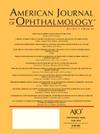早产儿视网膜病变筛查的SCREENROP标准的验证:一个加拿大模型的考虑。
IF 4.1
1区 医学
Q1 OPHTHALMOLOGY
引用次数: 0
摘要
目的:对新生儿进行不必要的早产儿视网膜病变(ROP)筛查教育,对于最大限度地降低与此类检查相关的发病率(包括患儿的疼痛、家长的焦虑)和节约医疗资源非常重要。加拿大新生儿早产儿视网膜病变循证检查建议》(SCREEN-ROP)指南建议只对出生体重(BW)小于 1200 克或胎龄(GA)小于 30 周的婴儿进行筛查,以避免不必要的筛查。本研究旨在回顾性测试 SCREEN-ROP 在加拿大大型城市环境中捕捉需要治疗 ROP 的婴儿的灵敏度。设计对修订后的诊断检测标准进行回顾性准确性分析。参与者2016 年 7 月 1 日至 2024 年 5 月 31 日期间在麦克马斯特儿童医院出生的所有婴儿,这些婴儿必须:1)至少接受过一次 ROP 治疗:方法从加拿大新生儿网络(CNN)和安大略省新生儿网络(BORN Ontario)收集出生时的体重(BW)和胎龄(GA),CNN和BORN Ontario分别存储了3级和2级新生儿重症监护病房(NICU)收治的婴儿的所有信息。队列中采用了 SCREEN-ROP 标准。该研究获得了汉密尔顿综合研究伦理委员会(REB #13216-C)和CNN(REB #04-062)的伦理批准。主要结果测量计算了模型的灵敏度和特异性,并得出了95%的置信区间。结果2016年7月1日至2024年5月31日,共筛查了823名婴儿,其中79名婴儿接受了ROP治疗。应用 SCREEN-ROP 标准筛查出了所有需要接受 ROP 治疗的 79 名婴儿,同时避免了另外 61 名婴儿(7.41%)不必要地接受 ROP 筛查。结论通过筛查体重小于 1200g 或身高小于 30 周的婴儿,可使 7.41% 的婴儿免于接受不必要的 ROP 筛查,而所有需要接受 ROP 治疗的婴儿都会被筛查出来,敏感性达到 100%。在其他大型中心和国家进行进一步验证后,SCREEN-ROP 指南可能会得到更广泛的实施。本文章由计算机程序翻译,如有差异,请以英文原文为准。
Validation of the SCREENROP Criteria for Retinopathy of Prematurity Screening: A Canadian Model for Consideration
Purpose
Reducing unnecessary retinopathy of prematurity (ROP) screenings in neonates is important for minimizing morbidity associated with such examinations including pain for the child, anxiety in parents, and conserving healthcare resources. The Seminal Canadian Recommendations for Evidence-Based Examination of Neonates for Retinopathy of Prematurity (SCREEN-ROP) guidelines recommend only screening babies with birth weight (BW) <1200 g or gestational age (GA) <30 weeks to prevent unnecessary screenings. This study aims to retrospectively test the sensitivity of SCREEN-ROP in a large urban Canadian setting for capturing babies requiring treatment for ROP.
Design
Retrospective accuracy analysis of revised diagnostic testing criteria.
Methods
All babies born at McMaster Children Hospital from July 1, 2016 to May 31, 2024 who: 1) received at least one ROP eye exam, or 2) received ROP treatment, were included. Birth weight (BW) and gestational age (GA) at birth were collected from Canadian Neonatal Network (CNN) and BORN Ontario, which stores all information on babies admitted to level 3 and level 2 Neonatal Intensive Care Units (NICUs), respectively. SCREEN-ROP criteria were applied to the cohort. Institutional ethics approval was obtained from Hamilton Integrated Research Ethics Board (REB #13216-C) and CNN (REB #04-062).
Results
Sensitivity and specificity of the model was calculated with 95% confidence intervals. Chi-squarede test was used to compare the babies captured with SCREEN-ROP criteria versus prior criteria (GA<31 weeks or birth weight <1251 g). 823 unique babies were screened from July 1, 2016 to May 31, 2024 of which 79 unique babies were treated for ROP. Applying the SCREEN-ROP criteria captured all 79 babies requiring ROP treatment while avoiding another 61 babies (7.41%) from being unnecessarily enrolled into ROP screening. Sensitivity of SCREEN-ROP criteria for capturing babies requiring ROP treatment was 100% (95% CI: 95.44% to 100%), and the specificity was 8.20% (95% CI: 6.33% to 10.41%).
Conclusions
By screening babies with BW <1200 g or GA <30 weeks, 7.41% of babies would have been saved from unnecessary ROP screenings, and all babies requiring ROP treatment would have been captured with 100% sensitivity. Further validation in other large centers and countries may allow for broader implementation of SCREEN-ROP guidelines.
求助全文
通过发布文献求助,成功后即可免费获取论文全文。
去求助
来源期刊
CiteScore
9.20
自引率
7.10%
发文量
406
审稿时长
36 days
期刊介绍:
The American Journal of Ophthalmology is a peer-reviewed, scientific publication that welcomes the submission of original, previously unpublished manuscripts directed to ophthalmologists and visual science specialists describing clinical investigations, clinical observations, and clinically relevant laboratory investigations. Published monthly since 1884, the full text of the American Journal of Ophthalmology and supplementary material are also presented online at www.AJO.com and on ScienceDirect.
The American Journal of Ophthalmology publishes Full-Length Articles, Perspectives, Editorials, Correspondences, Books Reports and Announcements. Brief Reports and Case Reports are no longer published. We recommend submitting Brief Reports and Case Reports to our companion publication, the American Journal of Ophthalmology Case Reports.
Manuscripts are accepted with the understanding that they have not been and will not be published elsewhere substantially in any format, and that there are no ethical problems with the content or data collection. Authors may be requested to produce the data upon which the manuscript is based and to answer expeditiously any questions about the manuscript or its authors.

 求助内容:
求助内容: 应助结果提醒方式:
应助结果提醒方式:


